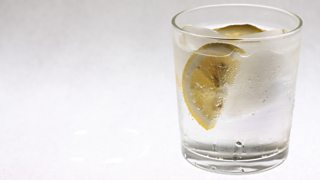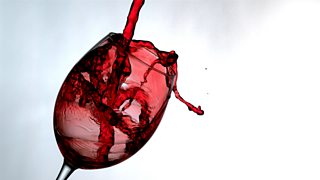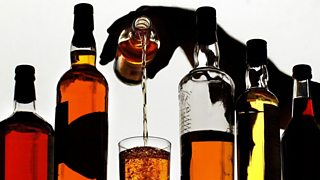Why more of us are choosing low-alcohol drinks
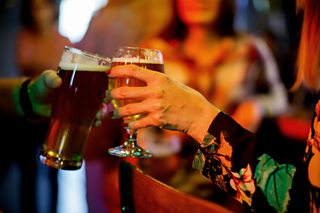
The festive party season can be a time when we overindulge, so many of us will be avoiding the booze and opting for an alcohol-free beer in January and into the new year.
According to the IWSR Drinks Market Analysis, the low and no-alcohol drinks market is continuing to expand, with consumption expected to grow 31% by 2024. As brewer Jaega Wise explored in The Food Programme, while people cut down on booze – or even renounce it entirely – new non-alcoholic alternatives are pouring onto the market and shaking up the alcohol sector.
So, why are so many of us going “NOLO”?
Health and wellbeing
One driving force is health, which has moved up many of our priority lists in light of the COVID pandemic. There are, after all, many health benefits to reducing alcohol intake:

- Alcohol disrupts the crucial "REM" stage of sleep, which we need in order to feel rested and restored. Counter to what many people think, no booze means a better snooze.
- Low-alcohol or alcohol-free drinks often have fewer calories and less sugar than their alcoholic alternatives, so can be beneficial for the waistline.
- High alcohol consumption can impair our immune system, making it easier to catch colds and other illnesses.
- More importantly, reducing alcohol consumption helps avoid more serious long-term effects including cancer, high blood pressure, and liver and heart disease.
- And then there’s mental health. Regular, heavy drinking can interfere with our brain chemicals and (though it might make us feel relaxed in the short-term) contribute to feelings of depression, anxiety and stress.
A much wider range of NOLO drinks is available
No- and low-alcohol drinks are just much more widely available: there’s now a NOLO option, whatever your tipple. Big brands have recognised the opportunity for big bucks and are getting on board the bandwagon.
There’s now a NOLO option, whatever your tipple.
Jaega Wise, head brewer at Wild Card Brewery, says she’s seen a huge growth in the non-alcohol sector: “What we’re seeing, in beer, is established brands coming out with non-alcoholic lines.”
For those who aren’t beer drinkers, the non-alcoholic alternatives used to be thin on the ground. But now there are distilled, non-alcoholic spirits on the market, and many major gin brands are launching their own 0.0% alcohol alternatives. (We can now have a drink that feels like a classic G&T, just without the booze.) Big cider, wine, Cava and Prosecco brands are all doing the same.
But can you feel drunk without drinking alcohol? All Consuming investigates.

Pubs and bars are cottoning on and expanding their own ranges
Laura Willoughby and Jussi Tolvi are founders of a “mindful drinking” movement called Club Soda. They meet in pubs and bars, because they want to give people who are hoping to change their negative drinking habits the confidence to order non-alcoholic drinks in a social context. They say it’s getting easier to find a pub with a good range of low-alcohol drinks.
It’s getting easier to find a pub with a good range of low-alcohol drinks.
“I think in the last couple of years things are definitely changing and more and more pubs and bars are putting more alcohol-free and low-alcohol drinks on offer,” says Jussi.
Pubs and bars pay for their rent 24-7, so it’s just as much about the lunchtime market, the weekday market, people who may be driving and customers who are pregnant, as it is the conventional alcohol-consuming patrons, says Laura. “They’re beginning to see that that’s a wider group of people that they’ve maybe never tapped before.”
There are now even completely alcohol-free drinking establishments like BrewDog AF Bar, the world’s first alcohol-free beer bar.

The UK's first alcohol-free drinking festival
Official statistics report that one in five adults never drink alcohol.
The drinks are tasting better
“Alcohol has flavour,” says Jane Peyton from the School of Booze, who offer online learning courses and tasting events. “If you remove the alcohol, you’re removing an awful lot of flavour, so the challenge is keeping that flavour in.” Non-alcoholic beer does well, says Jane, because it contains hops, “which punch it up and give you all that flavour back.”
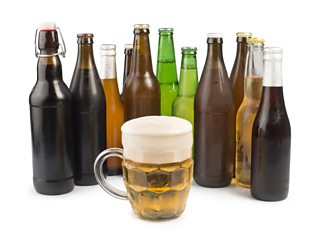
Becky Kean, co-founder of Nirvana brewery, says products improving has made a huge difference to consumers. “If you can have a nice beer that tastes like a proper beer, it doesn’t really matter if there’s no alcohol,” she says.
And it’s not just the brewers who are prioritising flavour in their NOLO products. Where mocktails were conventionally unnaturally colourful, saccharine affairs, there are now non-alcoholic spirits on the market that are full of subtle, sophisticated, botanical flavours.
NOLO helps with FOMO
James Grundy co-founded Small Beer Brew Co. to sell what he calls “sociable ABV beers”, with an alcohol content of between 0.5% and 2.8%. It’s a heritage that goes back a long way. In the 1700 and 1800s, small beer was drunk as the safe alternative to water by pretty much everyone, from school children right through to high society.
He says one reason that small beers and other low-alcohol drinks are doing well today is because they make it easier to say yes to a social occasion when we don’t want to drink too much. It might be that we’re up early the next day and don’t want to wake with a cloudy head, or we might need to get back to productively working after a pub lunch, or we might have had a couple of five or six percenters and need a bit of “a leveller”, says James. On these occasions, we don’t always want a soft, sugary number – or to have to forego the social event altogether – we just “want to have a great beer in hand.”
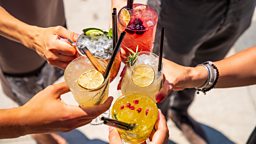
Teetotal teens are on the up
Overall alcohol consumption has been in a steady decline since the mid-2000s, and it’s amongst the 16-to-25 age range that that decline has been most notable. “One of the features of that is there’s been an increase in teetotalism in that age-group,” says James Nicholls, in his role as director of research and policy at Alcohol Change UK in 2018.
Alcohol consumption tends to go up when people feel more economically secure overall.
According to the Society of Independent Brewers' (SIBA) British Craft Beer Report in 2020, almost one in four young people have become teetotal. The young shunning alcohol has been a huge factor in the rise of no- or low-alcohol beer sales.
Aside from the growth in health consciousness, why are young people drinking less?
“Part of it is to do with economic security,” says James. Twenty years ago, the economic prospects for young people were much brighter. There was less pressure on them in terms of work and studying. “When you look historically you find that alcohol consumption tends to go up when people feel more economically secure overall.”
He thinks social media has played a role too. There’s an awareness amongst young people that if you go out and you get drunk, and everyone’s taking snaps on their phone, “it’s not a great look.”
“I think there’s also a longer-term trend,” he states. “You often find that when you have quite a heavy drinking generation, which we did between the mid-80s and mid-2000s, that often the following generation doesn’t drink so much, partly because there’s nothing transgressive about it anymore. You’re not defining yourself against your parents if you’re doing the same things that they are.”

Food and drink on Radio 4
-
![]()
The Food Programme
Radio 4's weekly programme investigating every aspect of the food we eat.
-
![]()
Does hangover-free alcohol leave you with a headache?
Kathy Kayton of Brighton Gin talks to Peter White about how they've developed a hangover-free spirit.
-
![]()
What does alcohol do to the brain?
Dr Sally Marlow explains the chemical processes that affect the way we feel after a few drinks.
-
![]()
How harmful is alcohol?
Are the benefits and harms of alcohol being judged correctly? Tim Harford and Charlotte McDonald investigate.

